Rullskridskoåkning är tillbaka och för alla - oavsett om du glider utomhus, snurrar på rink eller drömmer om tricks. Men att börja kan kännas skrämmande. Den här guiden bryter ner allt steg för steg så att du kan lära dig grunderna säkert och med självförtroende.
Så här ser planen ut:
- Utrusta dig: Skaffa hjälm, handledsskydd, knäskydd och armbågsskydd. Säkerheten först!
- Välj dina skridskor: Quad-skridskor är perfekta för nybörjare, medan inline-skridskor ger fart och smidighet.
- Bemästra grunderna: Lär dig att balansera, åka framåt, stanna och svänga.
- Träna smart: Börja på gräs eller matta, och gå sedan vidare till släta ytor som rinkar eller tomma parkeringsplatser.
- Undvik vanliga misstag: Håll knäna böjda, luta dig lätt framåt och se till att dina skridskor sitter tajt.
Med regelbunden träning (20–30 minuter, 3–4 gånger i veckan) bygger du snabbt upp självförtroende. Börja långsamt, fokusera på balansen och oroa dig inte för att falla - det är en del av processen. Redo att rulla? Kör igång!
Steg-för-steg guide för nybörjare i rullskridskoåkning - Kontrollera dina skridskor, stå & åk med självförtroende
Säkerhetsutrustning för rullskridskoåkning
Att ha rätt säkerhetsutrustning är nyckeln till att bygga självförtroende och förbättra dina rullskridskofärdigheter. Låt oss vara ärliga – fall är en del av inlärningsprocessen. Men med rätt skydd kan du minimera skador och fokusera på att bli bättre samtidigt som du är säker.
Viktig säkerhetsutrustning
Några få utrustningsdelar kan göra stor skillnad när du börjar:
- Hjälm: Välj en certifierad hjälm för rullskridskosport som sitter tätt och jämnt på huvudet. Ett bra test? Den ska röra sig lite när du öppnar munnen.
- Handledsskydd: Dessa skyddar dina händer vid fall. Leta efter sådana med stadiga skenor och justerbara remmar för en säker passform.
- Knäskydd: Välj knäskydd med ett hårt yttre skal för stöttålighet, mjuk innervaddering för komfort och justerbara remmar som håller dem på plats.
- Armbågsskydd: Dessa är livräddare vid fall eller tajta svängar. Hitta sådana med hållbara material, bra dämpning och remmar som låter dig röra dig fritt.
"Att veta att du är väl skyddad ger dig självförtroendet att utforska och tänja på dina gränser när du åker rullskridskor. När du har rätt utrustning på dig kan du fokusera på att förbättra dina färdigheter och njuta av upplevelsen utan att ständigt oroa dig för skador."
– Bont Skates Onlinebutik
Extra skydd att överväga
För utomhusåkare kan extra skydd som vadderade shorts eller benskydd ge extra skydd. Dessa är särskilt hjälpsamma om du åker på ojämna eller grova ytor.
Inomhus- vs. utomhusutrustning
Inomhusåkning kräver vanligtvis bara det grundläggande: hjälm, handledsskydd, knäskydd och armbågsskydd. De släta ytorna i rinkar är mer förlåtande, så mindre utrustning behövs oftast.
Utomhusåkning har däremot sina egna utmaningar – tänk sprickor, skräp och ojämn asfalt. För dessa förhållanden är lätt utrustning med skumvaddering och hårda plastskydd idealisk. En hjälm i skridskostil är ofta bättre än en vanlig cykelhjälm eftersom den ger extra skydd bak på huvudet, vilket är bra vid bakåtfall.
Gör det till en vana att regelbundet inspektera din utrustning för skador och se till att alla remmar sitter ordentligt. Med rätt utrustning är du redo att ta dig an grunderna och mer därtill!
Hur man väljer rullskridskor
Att välja rätt rullskridskor handlar om tre huvudfaktorer: var du ska åka, hur bekväma de känns och din personliga stil. Ditt val bör passa din åkmiljö och hjälpa dig att nå dina lärandemål.
Quad Skates vs. Inline Skates
Quad skates, med sin klassiska fyrhjuliga rektangulära uppsättning, är perfekta för nybörjare. De är stabila, lätta att kontrollera och har tåstopp som gör det enkelt att stanna. Dessa skridskor är utmärkta för inomhuskul som dans eller konståkning.
Inline-skridskor är däremot byggda för hastighet och smidighet. De passar bättre för utomhusäventyr eller längre turer, särskilt när du fått bra koll på balans och koordination.
Om du precis börjat är quad-skridskor troligen ditt bästa val. De hjälper dig att känna dig mer säker när du lär dig grunderna och vänjer dig vid rörelserna.
Viktiga funktioner att leta efter
Funktionerna på dina skridskor kan göra hela skillnaden för din upplevelse. Här är vad du bör tänka på:
- Skohöjd: Höga skor ger extra stöd för ankeln, vilket är bra för nybörjare. Låga skor ger däremot mer flexibilitet och föredras ofta av erfarna åkare.
- Hjulhårdhet: Mjukare hjul (klassade 78A–85A) greppar bättre på utomhusytor, medan hårdare hjul (86A–101A) är snabbare på släta inomhusgolv.
- Hjulstorlek: Större hjul (62mm–70mm) är bättre för ojämn utomhusterräng, medan mindre hjul (57mm–62mm) ger bättre kontroll för inlärning.
- Lagren: ABEC-5-lager är ett stabilt val för nybörjare och erbjuder en bra balans mellan hastighet och prisvärdhet.
- Plattmaterial: Aluminiumplattor är lätta och responsiva, medan nylonplattor är mer budgetvänliga och utmärkta för casual åkning.
Hitta den perfekta passformen
En bra passform är allt – den håller dig bekväm, hjälper till med kontroll och förebygger skador. Skridskor ska kännas tajta men inte trånga. I de flesta fall är de ungefär en halv storlek mindre än dina vanliga skor.
När du provar dem, ha på dig de strumpor du ska åka i. Dina tår ska precis nudda framdelen av skon, och hälen ska sitta stadigt. Var också uppmärksam på bredden – skridskor som är för smala kommer att klämma, medan för breda kan göra att du känner dig ostadig.
Tänk på att kvalitativa skridskor behöver en kort inkörningsperiod. Om du kan, besök en lokal skridskobutik för en professionell passform. Handlar du online? Se till att återförsäljaren har en bra returpolicy.
Räkna med att spendera mellan 600 och 1500 kronor på ett bra par nybörjarskridskor. Om du letar efter något unikt, erbjuder Snowfeet* skridskor en kombination av komfort, hållbarhet och stöd, vilket gör dem till ett utmärkt val för nybörjare som vill utveckla sina färdigheter.
När du har rätt skridskor är du redo att ta dig an grundläggande tekniker och börja rulla med självförtroende.
Grundläggande tekniker för rullskridskoåkning
Behärska grunderna, så bygger du upp självförtroendet och kontrollen som behövs för att åka säkert och ha roligt.
Rätt hållning och balans
Din hållning är allt. Börja med fötterna axelbrett isär och böj knäna lätt. Denna position ger dig en stabil bas och hjälper dig att behålla kontrollen. Flytta vikten lite framåt – det är nyckeln för att hålla balansen. Låt armarna hänga naturligt vid sidorna, redo att hjälpa dig hålla stadgan.
Innan du börjar rulla, vänj dig vid denna ställning. Håll i en vägg eller räcke, eller prova att marschera på stället för att vänja dig vid känslan av skatesen. Flytta vikten från en fot till den andra medan du håller knäna böjda. Detta hjälper dig att förstå hur hjulen rör sig under dig.
Om du är nervös, prova att öva på gräs eller matta. Dessa ytor saktar ner dig och ger en mjukare landning om du ramlar. Att dra åt hjulen på dina skates kan också hjälpa genom att minska hastigheten och ge dig mer stabilitet medan du lär dig.
När du har fått till ställningen är du redo att börja röra dig framåt.
Att röra sig framåt
När du känner dig stadig är det dags att rulla. Börja med små knuffar – växla mellan varje fot, tryck försiktigt ifrån och glid framåt. Håll knäna böjda och behåll den lilla framåtlutningen. När du blir mer bekväm kan du gradvis lägga mer kraft i knuffarna för mjukare, längre glid.
Hur man stannar
Att kunna stanna är lika viktigt som att lära sig att röra sig, särskilt om du åker utomhus där backar snabbt kan öka din hastighet. För nybörjare som använder quad skates är Toe Stop Drag en enkel och effektiv metod. Böj ditt främre knä och för över mestadels av vikten (ungefär 80 %) på det benet. Låt tåbromsen på ditt bakre skate dra efter dig. Se till att ditt bakre knä är böjt och vinkla foten lite inåt, som en ballerina. Håll majoriteten av vikten på främre skatet för att bromsa mjukt.
Ett annat bra alternativ är T-Stop. Dra ett skate bakom det andra och bilda ett T. Vrid den dragande foten så att den står vinkelrätt mot det främre skatet. Sidan av hjulen skapar friktion och saktar ner dig.
Om dina skates har en hälsbroms, prova Heel Brake Stop. Börja med båda skates ihop och knäna böjda. Flytta ungefär 70 % av vikten till ett skate medan du rullar det andra foten (den med hälsbromsen) lite framåt. Tryck på bromsen samtidigt som du håller denna position för att stanna kontrollerat.
Att kombinera och variera dessa stopptekniker hjälper dig att kontrollera din hastighet och minska slitaget på dina hjul.
Att bemästra dessa grunder ger dig en stabil grund för att ta dig an mer avancerade skatefärdigheter när du blir mer självsäker på dina hjul.
sbb-itb-17ade95
Att svänga och falla säkert
Nu när du har fått kläm på att åka framåt och stanna är det dags att ta itu med att svänga och, ja, falla – på rätt sätt. Det här är viktiga färdigheter som gör dig mer självsäker och bekväm på dina skates.
Hur man svänger
För att göra mjuka svängar handlar allt om att luta sig, fördela vikten och kontrollera kanterna. Börja med att luta dig försiktigt i den riktning du vill åka samtidigt som du för över vikten till den sidan. Spänn bålen för att hålla balansen stabil. För skarpare svängar, gräv ner kanterna – det hjälper dig att glida smidigare genom svängen. Och glöm inte: håll alltid blicken där du vill åka. Att titta framåt håller dig fokuserad och i kontroll.
Säkert fallande och att resa sig upp igen
Att falla är bara en del av inlärningsprocessen, så oroa dig inte. Om du ramlar, ta en stund för att kontrollera att du mår bra innan du reser dig upp igen. Ta det lugnt - det finns ingen brådska.
Med övning kommer dessa sväng- och falltekniker hjälpa dig att bygga självförtroende och förbättra dina skridskofärdigheter över tid.
Träningsschema för nybörjare
När du har fått grepp om grunderna kan ett strukturerat träningsschema hjälpa dig att förbättras snabbare. Nyckeln är konsekvens och att hålla passen hanterbara.
"Resan från nybörjare till skicklig åkare kräver konsekvent övning av grundläggande tekniker."
Sikta på korta men regelbundna träningspass - cirka 20 till 30 minuter, 3 till 4 gånger i veckan. Det här schemat hjälper dig att bygga uthållighet utan att överanstränga dig eller tappa motivationen. Framsteg tar tid, så ha tålamod och håll ut.
Mellan dessa pass, försök att ha på dig skridskorna hemma i 10–15 minuter. Att öva på matta eller i trånga utrymmen hjälper dig att finslipa din balans och viktfördelning.
Bästa platserna för träning
Var du övar kan göra stor skillnad för hur snabbt du känner dig bekväm på skridskor. Börja på gräs eller matta för att komma in i det. Som Princess on Skates säger:
"Börja på gräs eller matta: Det mjukar upp eventuella fall och låter nya åkare vänja sig vid känslan."
Det ger dig en chans att vänja dig vid vikten och känslan av dina skridskor innan du går vidare till slätare underlag.
När du är redo att åka är inomhusrinkar för rullskridskoåkning ett utmärkt alternativ. De erbjuder släta, förutsägbara ytor och en nybörjarvänlig atmosfär. Om du inte är redo att köpa skridskor är det smart att hyra dem på en rink för att prova olika stilar och hitta rätt passform.
Några nybörjarvänliga rinkar att kolla in är River Roll Skate Center i Kansas City, som passar alla färdighetsnivåer, och Skate Moore i Moore, Oklahoma, känt för att vara "en säker, ren, rolig och hälsosam plats för familjer, små barn och tonåringar".
Om du inte har tillgång till en rink, leta efter släta, tomma parkeringsplatser eller täckta paviljonger i parker. Håll dig borta från områden med sprickor, skräp eller mycket fottrafik tills du känner dig mer säker på dina skridskor.
Mål för färdighetsutveckling
Istället för att bara sikta på att "bli bättre", sätt specifika mål för att följa din utveckling. En checklista för rullskridskofärdigheter kan hjälpa dig att hålla koll på grunderna och säkerställa att du övar alla rätta tekniker. Och glöm inte - skyddsutrustning är ett måste, särskilt när du utmanar dig själv att lära dig nya trick.
Här är en exempel-tidslinje för att guida din träning:
- Vecka 1–2: Fokusera på att stå, balansera och ta dina första steg i skridskor.
- Vecka 3–4: Öva på att glida korta sträckor, tryck-och-glid-rörelsen och att stanna med tåstoppen.
- Vecka 5–6: Kombinera framåtsåkning med stopp, prova mjuka svängar åt båda håll och arbeta på att glida längre sträckor.
- Vecka 7–8: Jämna ut övergångarna mellan åkning, svängar och stopp. Öva på att resa dig efter fall och hålla en jämn hastighet.
För att komplettera din skridskoåkning, lägg till övningar utanför skridskorna som knäböj och utfall. Balansövningar med koner eller markörer kan också skärpa din smidighet och rumsuppfattning.
För en enkel logg över dina pass – notera varaktighet, vilka färdigheter du övade på och eventuella utmaningar. Detta hjälper dig att se hur långt du har kommit och identifiera områden som behöver extra arbete.
Vanliga misstag att undvika
När du bygger på din säkerhet och skridskogrunder finns det några vanliga misstag som kan få dig att snubbla – bokstavligen. Misstag är en del av lärandet, men att upptäcka dem tidigt kan hjälpa dig undvika onödiga fall och göra snabbare framsteg.
Dålig hållning är en av de största orsakerna till att skridskoåkare faller bakåt. Många nybörjare står för upprätt och lägger för mycket vikt på hälarna. Skridskocoachen Lisa J. Skates uttrycker det perfekt:
"Raka ben och rak rygg kan snabbt få dig att falla bakåt eftersom all din vikt fördelas på hälarna."
För att fixa detta, fokusera på en hållning där dina fötter är axelbrett isär. Håll dina vrister och knän lätt böjda, och luta dig lite framåt i midjan så att vikten förskjuts till framsidan av dina skridskor. Lisa J. Skates föreslår också:
"Tänk på de böjda knäna som fjädrar som komprimeras, studsar och reagerar på vad som händer på marken."
Ett snabbt tips: öva din hållning framför en spegel från sidan för att se om du gör rätt. Och glöm inte bort din utrustning – korrekt justerade skridskor kan göra stor skillnad.
Nästa, illasittande skridskor kan förstöra din upplevelse. Skridskor som är för stora kan få dina fötter att glida runt, medan för små leder till smärta och begränsar din rörelsefrihet. Sikta på en tajt passform som ger både komfort och kontroll.
Kolla också dina hjul. Att använda fel hjul för din yta är ett vanligt nybörjarmisstag. Inomhushjul är designade för släta rinkgolv, men de slits snabbt på ojämna utomhusytor. För utomhusskridskoåkning, välj hjul som klarar ojämn terräng.
Håll dig till släta, plana ytor när du börjar. Det hjälper dig att bygga självförtroende utan att oroa dig för svår terräng. Och även om det är frestande att prova avancerade trick tidigt, fokusera på att bemästra grunderna som balans, framåtrörelse och stopp först. Att rusa fram utan att behärska dessa kan sakta ner din totala utveckling.
Hemligheten för att undvika dessa fallgropar? Förberedelse och tålamod. Se till att din utrustning passar bra, välj säkra och lämpliga platser för träning, och ta dig tid att bemästra grunderna innan du går vidare till mer utmanande tekniker.
Komma igång med rullskridskoåkning
Nu när du har din skyddsutrustning och grundläggande tekniker på plats är det dags att dyka in i den roliga delen - att komma igång. Hemligheten till framgång med rullskridskoåkning är att ta det första steget med självförtroende och en smart strategi.
Börja med att välja rätt skridskor. Om du är osäker på vad som passar dig bäst, överväg att hyra först. Det ger dig en chans att prova olika stilar och storlekar utan att behöva köpa direkt.
Nästa steg är att fokusera på att bemästra grunderna: balans, säkert fallande, stopp, svängar och till och med åkning bakåt. Dessa är byggstenarna i din åkningsresa, och att bli bekväm med dem hjälper dig att utvecklas säkert och självsäkert.
Övning ger framsteg. Sikta på minst en träningssession i veckan, helst på en rullskridskobana, för att fortsätta förbättras. Under varje pass, arbeta på glidning, stopp, åkning bakåt och svängar. Nyckeln är konsekvens - regelbunden träning hjälper dig att bygga muskelminne och utveckla bättre hållning och rörelse över tid.
Börja med en balanserad, framåtlutad hållning. Ta små, kontrollerade steg, som att marschera på stället, för att vänja dig vid hjulen. Prova sedan "ankgång" genom att hålla hälarna ihop och tårna pekande utåt. Denna gradvisa metod hjälper dig att få självförtroende utan att känna dig överväldigad.
Ta det lugnt. Fokusera på komfort och balans innan du oroar dig för hastighet. Farten kommer naturligt när du bygger upp självförtroende. Håll armarna lösa och avslappnade för att hjälpa balansen, och om du behöver extra stabilitet, prova "derby"-ställningen - böj knäna och vila händerna på låren.
Att stanna är lika viktigt som att starta. Prioritera att lära dig och öva på stopptekniker tidigt.
När du får mer erfarenhet kommer du att märka hur din utrustning påverkar din åkning. Komponenter som hjul, plattor och pjäxor spelar alla en roll för din prestation. Att förstå dessa detaljer kommer att vara till nytta när du är redo att uppgradera din utrustning eller utforska olika åkstil.
Var inte rädd för att falla - det är en del av processen. Öva på säkra falltekniker så att du snabbt och självsäkert kan resa dig igen. Ju mer bekväm du är med att falla, desto lättare blir det att prova nya trick och tänja på dina gränser. Och kom ihåg, mental förberedelse - som att visualisera framgång och vara tålmodig - är lika viktigt som fysisk träning.
När du bemästrat grunderna kan du börja ta dig an mer avancerade färdigheter som häl-tå-tekniker, saxar och korsningar. Att lägga en stark grund nu gör det mycket lättare att lära sig avancerade rörelser senare.
Vanliga frågor
Vad är skillnaden mellan quad-skridskor och inline-skridskor för nybörjare?
För nybörjare är quad-skridskor ofta det självklara valet. Varför? Deras bredare hjulbas och hjul sida vid sida gör balansen mycket enklare. Dessutom har de en praktisk tåbroms, vilket gör det lättare att sakta ner eller stanna - perfekt för nybörjare som fortfarande hittar balansen.
Inline-skridskor har däremot sina hjul i en enda rad. Denna design kan kännas lite ostadig om du är nybörjare. Medan inline-skridskor är utmärkta för fart och snabba svängar kräver de mer balans och kontroll, vilket kan vara knepigt när du precis börjat.
Så, om du lär dig grunderna är quad-skridskor ett stabilt val för att hjälpa dig bygga självförtroende och bemästra grunderna i rullskridskoåkning.
Hur säkerställer jag att mina rullskridskor passar korrekt för att undvika obehag eller skador?
För att få perfekt passform på dina rullskridskor, börja med att mäta dina fötter och jämför måtten med storlekstabellen från skridskomärket. Skridskorna ska sitta tajt - inte för hårt - men ändå ge tårna tillräckligt med utrymme att röra sig. Undvik skridskor som känns för lösa; de kan göra dig ostadig och öka risken för skador.
När du provar skridskor, ha på dig samma strumpor som du kommer använda när du åker för bästa passform. Om du kan, stå upp och rör dig lite för att känna efter eventuella tryckpunkter eller obehag. Att hitta rätt passform är nyckeln för både komfort och säkerhet, så ta dig tid att välja storlek och modell som passar dig bäst.
Vilka är de bästa sätten att förbättra balans och stabilitet innan man börjar åka rullskridskor?
Att förbättra balans och stabilitet är ett utmärkt första steg innan du snör på dig dina rullskridskor. Börja med enkla övningar som att stå på ett ben i 10–20 sekunder på varje sida. Detta stärker din core och benmuskler, vilket är avgörande för att hålla balansen på hjul. Du kan också öva på att försiktigt fördela vikten från sida till sida eller prova en lätt knäböj för att efterlikna den hållning du kommer använda när du åker skridskor.
Om du är redo för något lite mer aktivt, prova att simulera skridskorörelser. En bra övning är att göra små "bubblor" genom att trycka fötterna utåt och dra dem tillbaka tillsammans. Om du har tillgång till en säker, plan yta, öva på att rulla framåt i en rak linje. Dessa övningar hjälper dig inte bara att vänja dig vid rörelserna utan bygger också upp din kontroll och självförtroende innan du ger dig ut på rink eller utomhusspår.







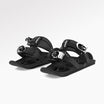













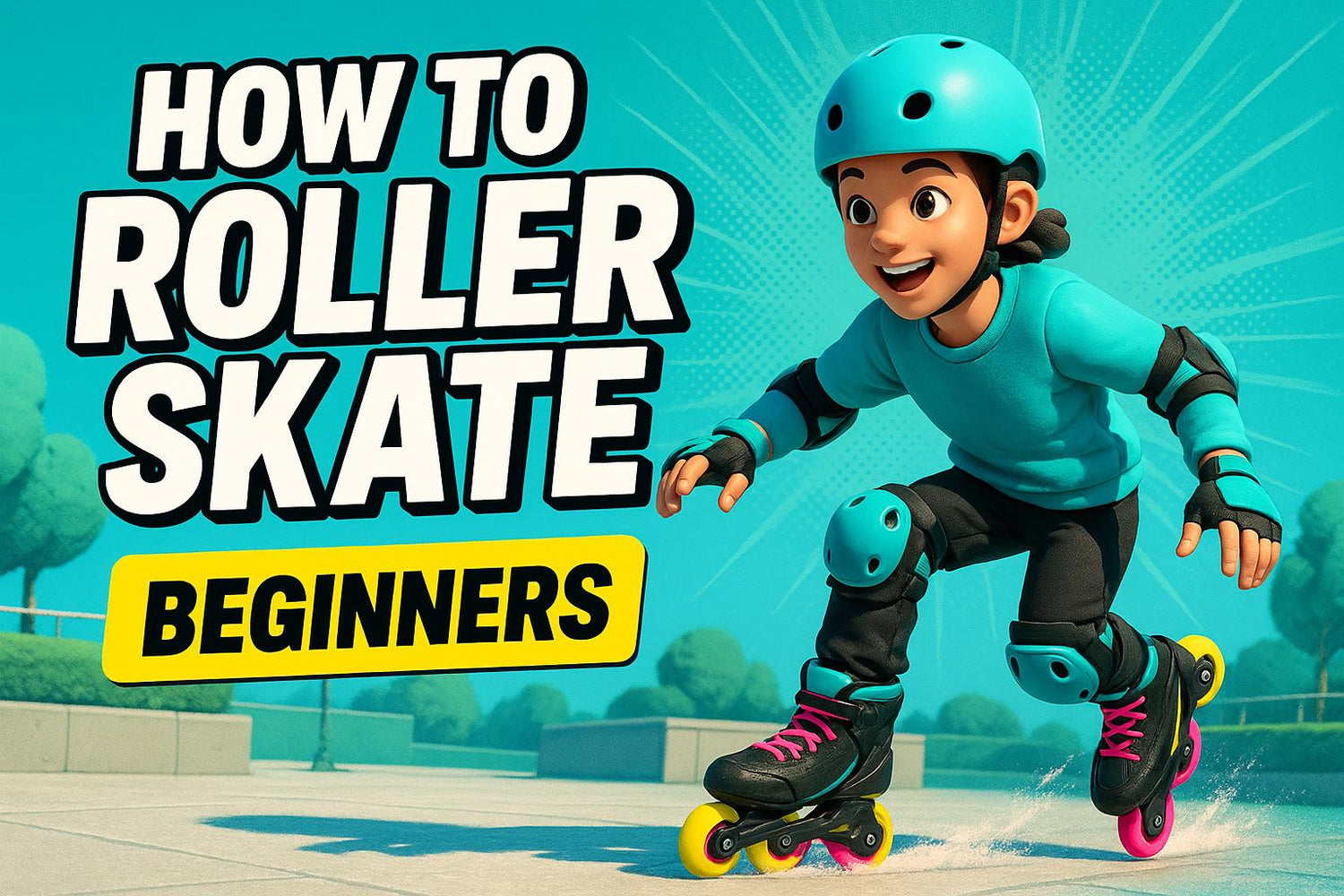
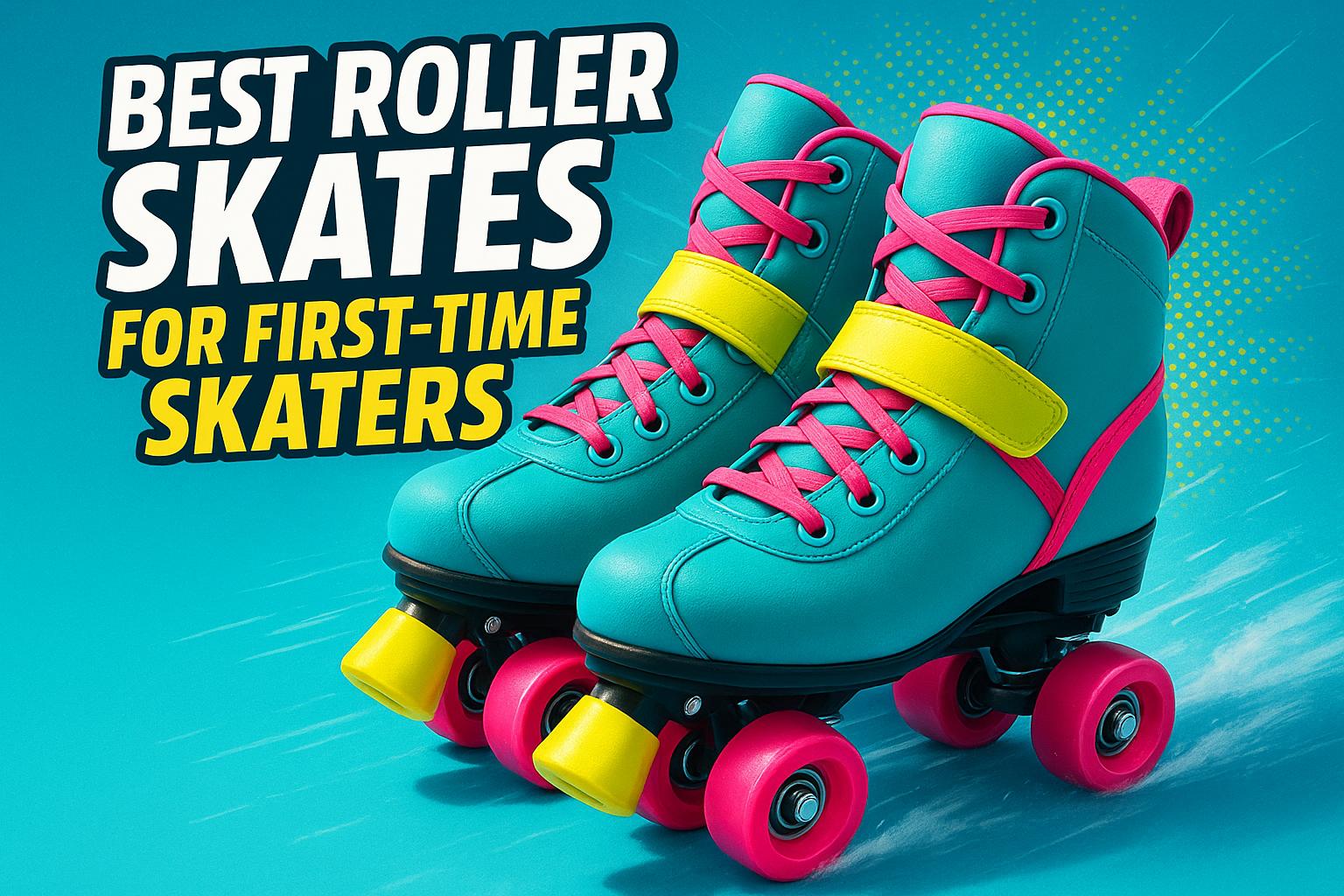
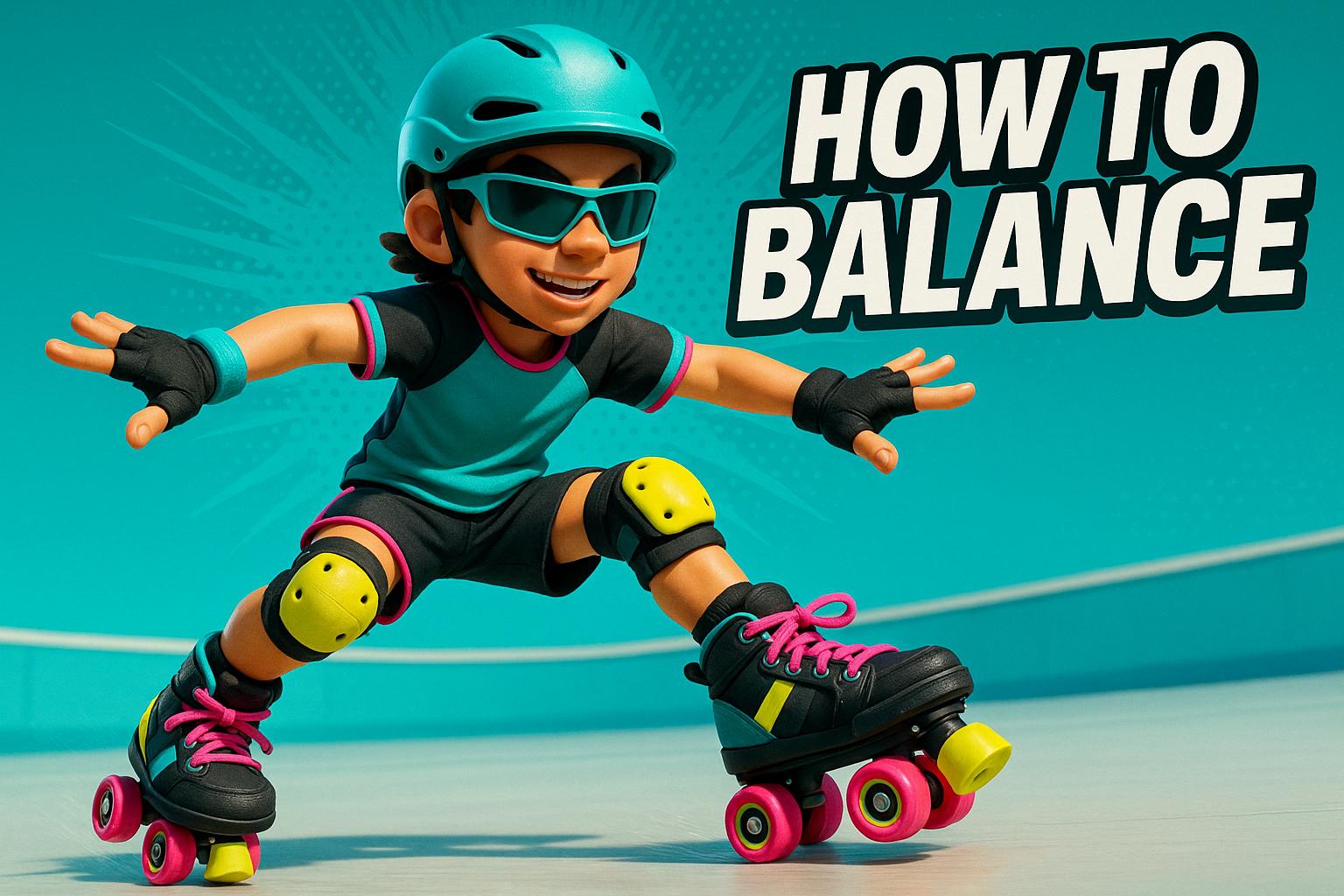




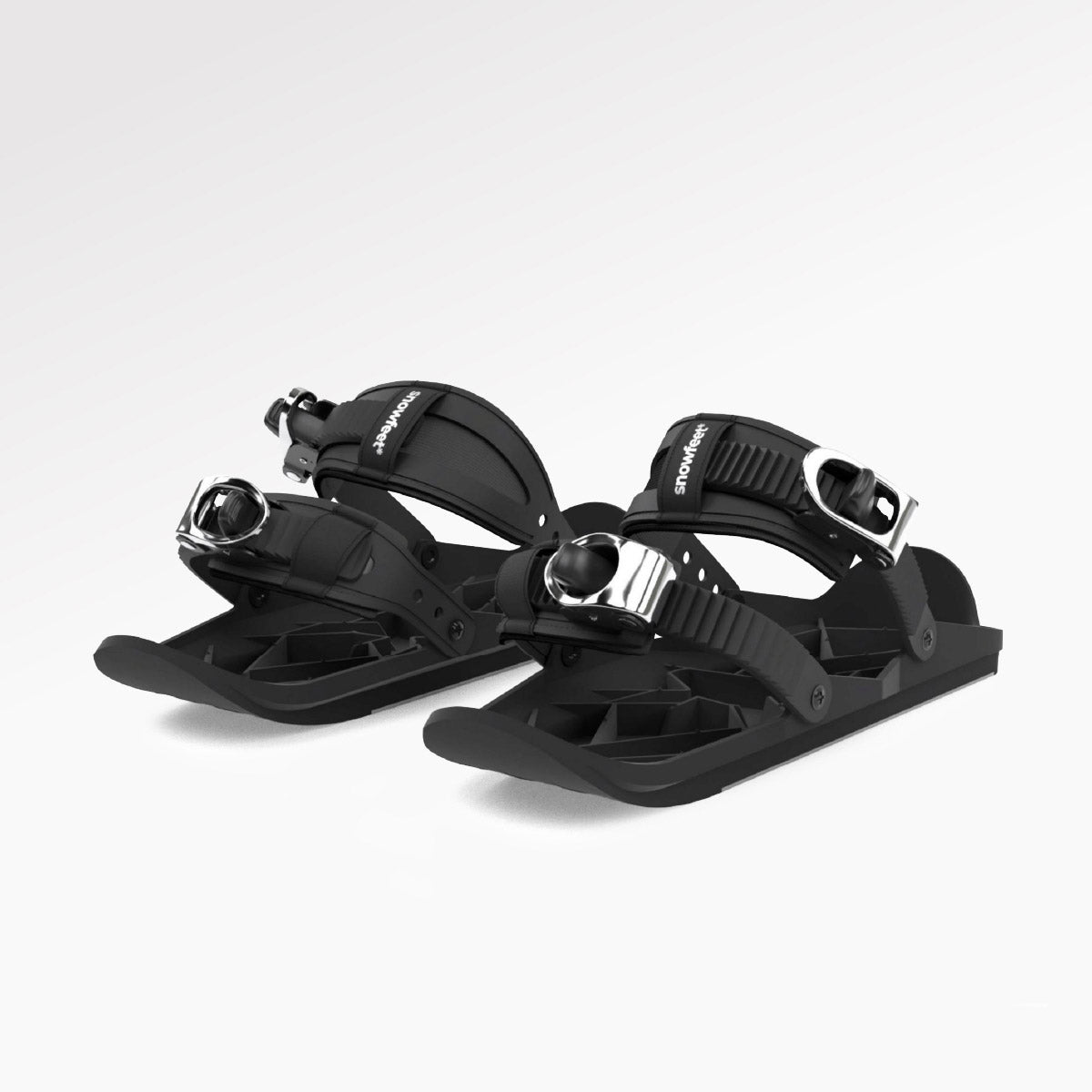
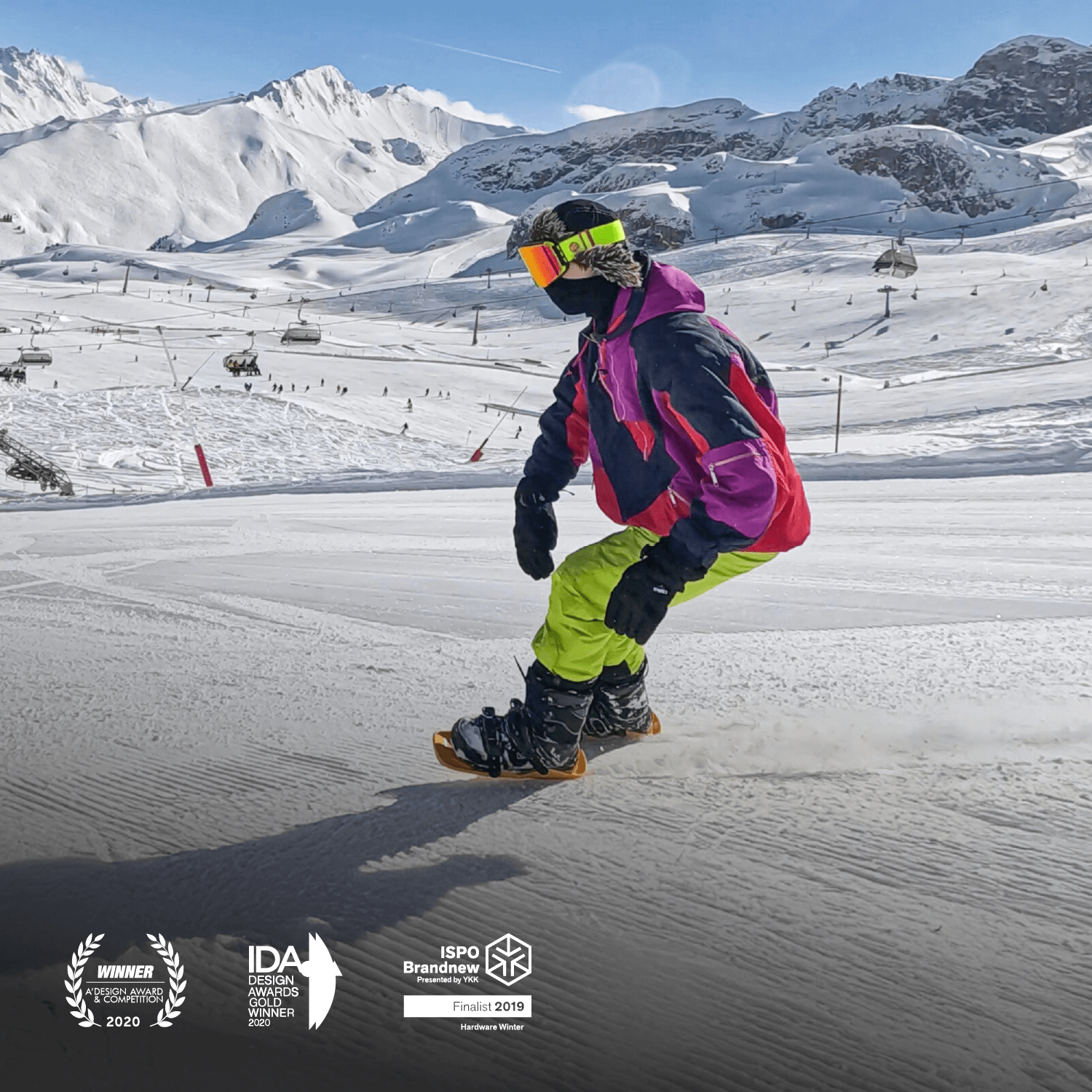




Lämna en kommentar
Denna webbplats är skyddad av hCaptcha och hCaptchas integritetspolicy . Användarvillkor gäller.